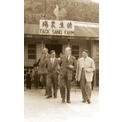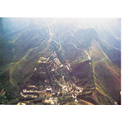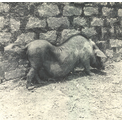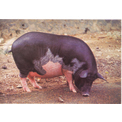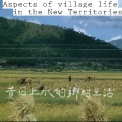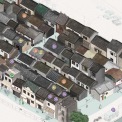 Collections
Collections A Partnership with the People: KAAA and Post-war Agricultural Hong Kong
A Partnership with the People: KAAA and Post-war Agricultural Hong Kong Agricultural Aid Projects
Agricultural Aid Projects Paak Ngau Shek Experimental Farm
Paak Ngau Shek Experimental Farm
The shortage of suitable pig breeding stock from the Government in the early days of KAAA posed a big challenge to the organisation’s pig breeding plan. A small government substation on the slopes of Tai Mo Shan would provide the answer. At an elevation of 2,000 ft, the substation was first established to study the impact of weather on crops growing at high elevations. KAAA felt they could assist the Government in these studies, whilst exploring the possibility of extending their own farm land and pig and poultry breeding centre to such environments.
And so, in 1956, the development of KAAA’s Experimental Farm at Paak Ngau Shek (the Kadoorie Farm) began. The work carried out at the Farm since has been diverse.
Pride of the Farm
Paak Ngau Shek Special Pigs
In the past, the agricultural department focused on pure-bred exotic stock, to the neglect of the local Fa Yuen pig. It was later discovered that this local breed had better resistance to disease.
In 1956, the Experimental Farm started selective breeding for the Fa Yuen strain. This resulted in the Paak Ngau Shek Special – the sway back and sagging belly were gone, only to be replaced by rapid growth, a fatter and more healthy pig.
Further cross-breeding with exotic boar produces the desirable breed for distribution to farmers.
Paak Ngau Shek Special Chickens
Cross-breeding of the New Hampshire hen, which had a faster growth rate, and the Wai Chow cock, whose flavor was more appealing, led to the Paak Ngau Shek Special.
This cross-breed was very popular with farmers in the 1970s, as the breed supplied over 80% Hong Kong’s restaurants.
Farmer’s training
Agricultural training was provided by the Agriculture and Fisheries Department and KAAA at the Kadoorie Farm. Courses usually combined practical work and simple lectures. A subsistence allowance was paid to farmer’s families to encourage students to complete the course.
KAAA experimented planting crops and rearing livestock at different altitudes in the farm, and shared their experience with the farmers.
